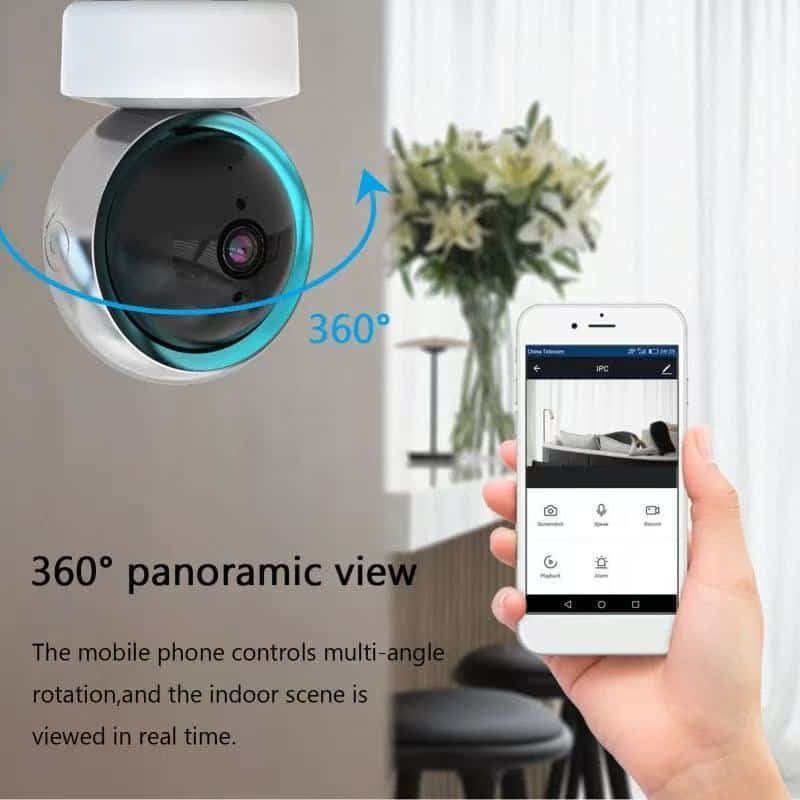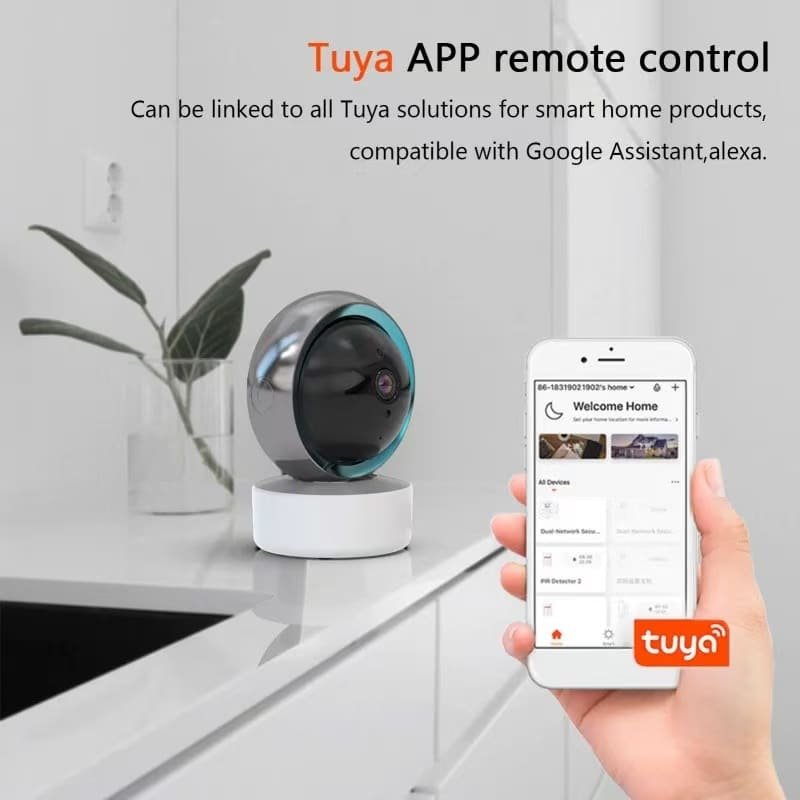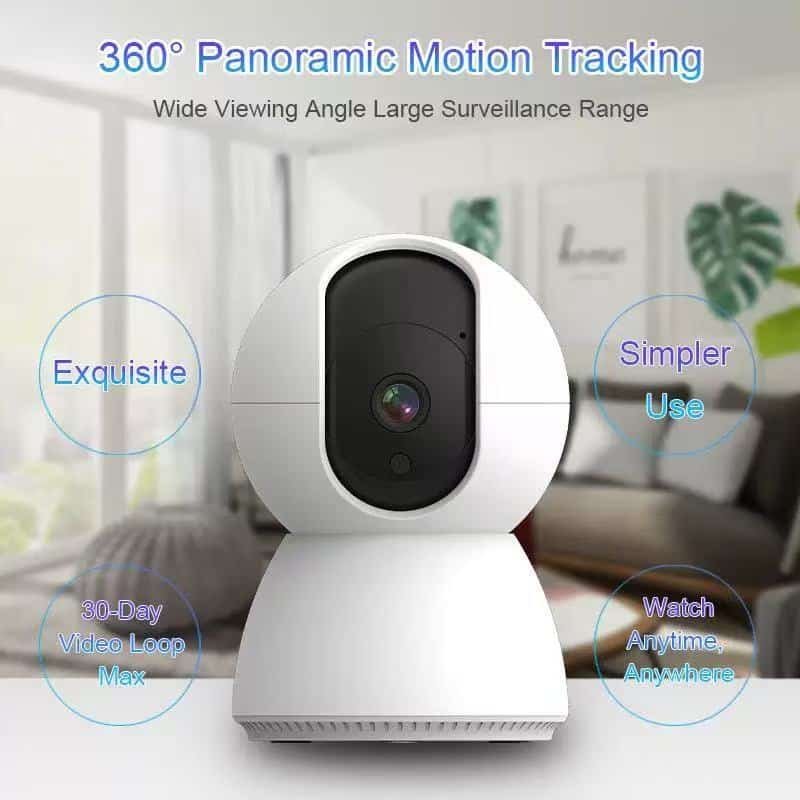In an increasingly connected world, how to guarantee home safety has evolved from simple lock-and-key solutions to sophisticated digital ecosystems. At the heart of this transformation lies modern webcam technology, which has become the cornerstone of contemporary home protection strategies. This comprehensive analysis examines exactly how today’s security solutions leverage advanced surveillance to deliver unprecedented peace of mind for homeowners across European and American markets.
The Evolution of Home Security: From Physical Barriers to Digital Monitoring
Traditional home security centered on physical deterrence—strong locks, reinforced doors, and alarm systems that responded after a breach occurred. The fundamental limitation of these approaches was their reactive nature; they addressed security incidents only after they had already begun. Modern security flips this paradigm through prevention and real-time awareness, with intelligent webcam systems serving as the central nervous system of this proactive approach.
The technological revolution in home surveillance has transformed the humble webcam from a simple video capture device into an intelligent monitoring partner. Understanding this evolution is crucial to appreciating how contemporary systems deliver substantially improved protection compared to their predecessors.
Core Webcam Technologies Revolutionizing Home Protection
Today’s security webcam incorporates multiple advanced technologies that work in concert to create comprehensive protection:
High-Definition Video Capabilities form the foundation of effective monitoring. Modern security webcam systems typically feature 1080p resolution as standard, with premium models offering 2K or 4K resolution that provides crystal-clear imagery both day and night. Night vision technology has advanced dramatically, with infrared capabilities now allowing detailed monitoring in complete darkness, sometimes at distances exceeding 30 feet.
Wide-Angle and Pan-Tilt-Zoom Functionality ensures comprehensive coverage without blind spots. While fixed-position cameras offer basic monitoring, the most effective webcam solutions provide 360-degree coverage either through ultra-wide 180-degree lenses or mechanical pan-tilt mechanisms that can track movement throughout protected spaces.
Advanced Motion Detection represents perhaps the most significant evolution in surveillance technology. Basic motion sensing that triggered false alerts from pets or shifting shadows has been replaced by AI-powered person detection that distinguishes between humans, animals, and vehicles. This intelligent filtering ensures homeowners receive alerts only for genuinely relevant activity.

Integration and Connectivity: The Smart Home Security Ecosystem
A standalone webcam provides limited value compared to an integrated security ecosystem. The true power of modern protection emerges when multiple devices communicate seamlessly:
Centralized Monitoring Platforms allow homeowners to access feeds from all their security webcam units through a single interface, regardless of their physical location. These platforms typically offer mobile applications with real-time alerts and historical review capabilities.
Automated Recording Triggers ensure that storage resources are used efficiently. Rather than continuously recording hours of uneventful footage, modern systems begin recording based on specific triggers—identified human movement, unusual sound patterns, or customized activity zones the homeowner has designated as high-priority.
Cross-Device Communication enables a truly responsive security environment. When a webcam detects unexpected movement, it can automatically trigger other security responses—turning on smart lights, locking smart doors, or sending specific alerts to homeowners’ mobile devices based on the perceived threat level.
Privacy and Data Security: Essential Considerations for Modern Surveillance
As webcam technology becomes increasingly sophisticated, addressing privacy concerns becomes paramount. The most respected security manufacturers implement multiple protection layers:
End-to-End Encryption ensures that video feeds remain private between the camera and the authorized viewer. Without proper encryption, surveillance systems potentially create security vulnerabilities even as they address physical safety concerns.
Local Storage Options provide an alternative to cloud-based solutions for privacy-conscious consumers. While cloud storage offers convenience and damage-theft protection, local storage using microSD cards or Network Video Recorders (NVRs) keeps footage entirely within the homeowner’s control.
Access Management Systems allow precise control over who can view feeds and when. Temporary access grants for house sitters, permanent access for family members, and restricted viewing schedules ensure that surveillance protects without intruding unnecessarily on private moments.

Strategic Implementation: Maximizing Security Effectiveness
Understanding how to guarantee home safety requires strategic placement and configuration of monitoring equipment:
Entry Point Coverage should include all exterior doors and ground-floor windows—the most common intrusion points. A weather-resistant outdoor webcam with wide-angle coverage provides comprehensive monitoring of these vulnerable areas.
Interior Chokepoints like hallways connecting rooms or staircases create natural monitoring positions where a single indoor webcam can cover multiple areas. Placement in these transition spaces maximizes coverage while minimizing the number of devices required.
Visibility Versus Discretion represents an important strategic balance. Visible exterior cameras act as deterrents, while discreet interior placement may be preferable for capturing clear footage without alerting intruders to their exact positions.
Advanced Features Defining Modern Security Solutions
The security webcam market continues to evolve with increasingly sophisticated capabilities:
Two-Way Audio transforms passive monitoring into interactive communication. This feature allows homeowners to speak directly through the webcam—whether to deter a potential intruder or communicate with family members or delivery personnel.
Smart Tracking enables cameras to automatically follow movement across their field of view. For pan-tilt-zoom models, this means the webcam can actively track a person’s movement throughout a space rather than capturing only a static view.
Facial Recognition technology allows systems to identify familiar faces and distinguish between family members, frequent visitors, and unknown individuals. This capability enables customized responses—sending different alert types based on whether detected movement comes from recognized household members or strangers.

Future Trends in Home Security Technology
The evolution of webcam technology continues with several emerging trends:
Artificial Intelligence Integration is moving beyond basic person detection toward more sophisticated behavioral analysis. Future systems may identify unusual patterns of movement or specific suspicious behaviors that warrant attention.
5G Connectivity will enable higher-quality streaming with reduced latency, particularly beneficial for areas with limited wired broadband infrastructure. This advancement will make professional-grade security systems accessible in more locations.
Cross-Platform Integration continues to expand, with security webcam systems increasingly compatible with broader smart home ecosystems. This integration creates more comprehensive automated responses to potential security events.
Implementation Guide: Creating Your Protected Home Environment
For homeowners seeking to implement comprehensive security, a systematic approach delivers optimal results:
- Security Assessment begins with identifying vulnerable points in your current setup. Walk your property at different times to understand sightlines and potential blind spots that need coverage.
- Device Selection should match specific security needs. Weather resistance, power options (wired versus battery), and recording quality should align with each camera’s intended position and purpose.
- Professional Monitoring Considerations extend beyond DIY approaches. Many security systems now offer optional professional monitoring services where trained personnel respond to alerts when homeowners are unavailable.
- Regular System Testing ensures ongoing reliability. Security systems require periodic verification that all components function correctly, with particular attention to camera positioning, motion detection sensitivity, and alert delivery systems.
The modern security webcam represents far more than a simple surveillance tool—it forms the foundation of a comprehensive approach to how to guarantee home safety in the digital age. By combining advanced imaging technology, intelligent analytics, and seamless integration with other smart home devices, these systems provide both prevention through visibility and response through immediate notification.
For European and American households seeking genuine peace of mind, understanding and implementing these sophisticated security solutions represents the most effective approach to contemporary home protection. As technology continues to advance, the capabilities of these systems will only expand, making now the ideal time to embrace this revolution in household safety.


